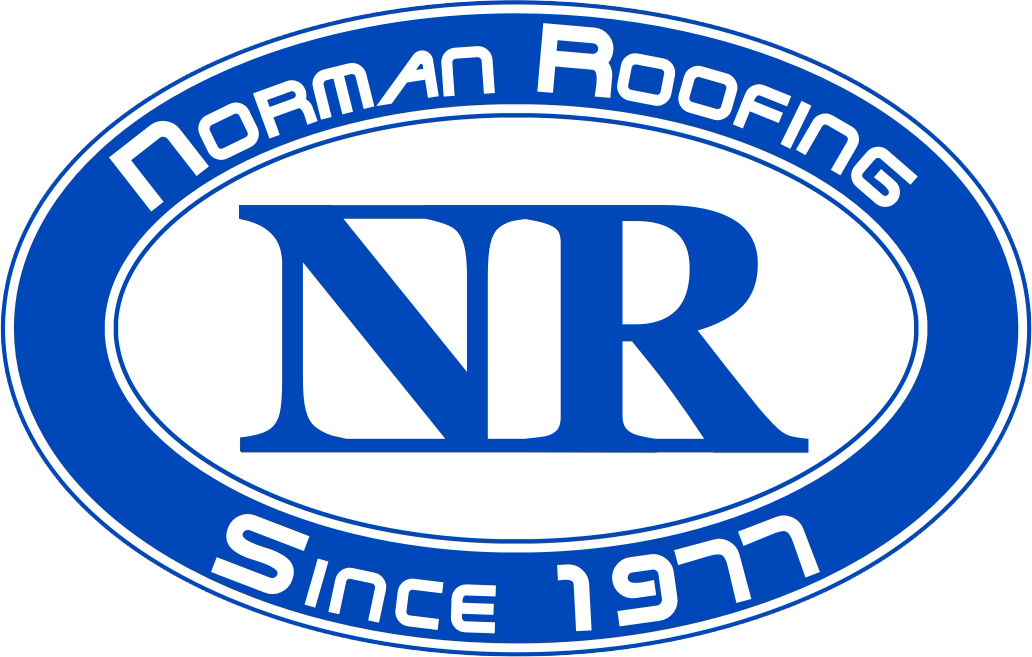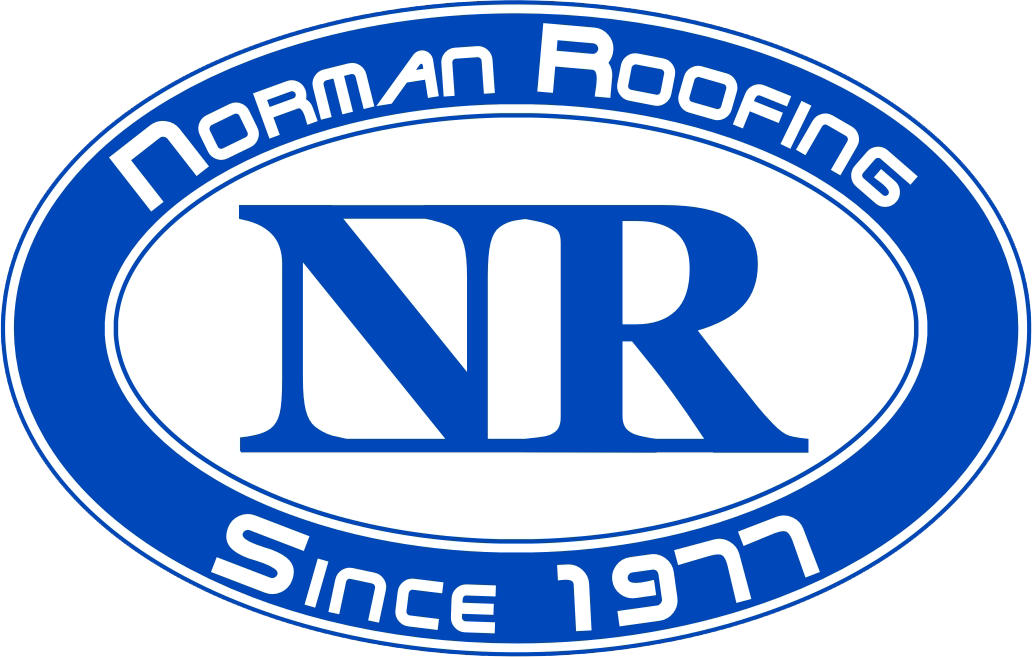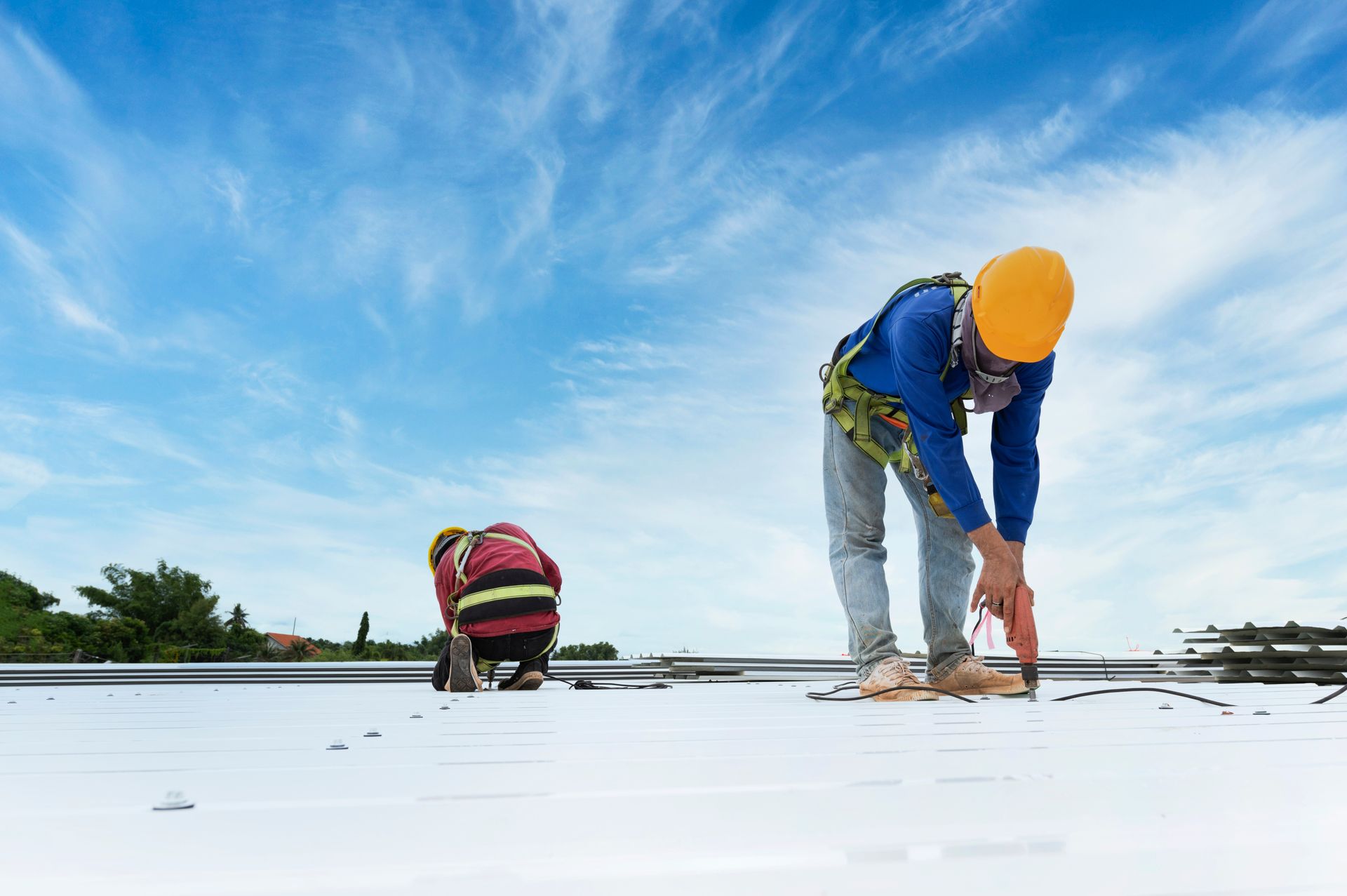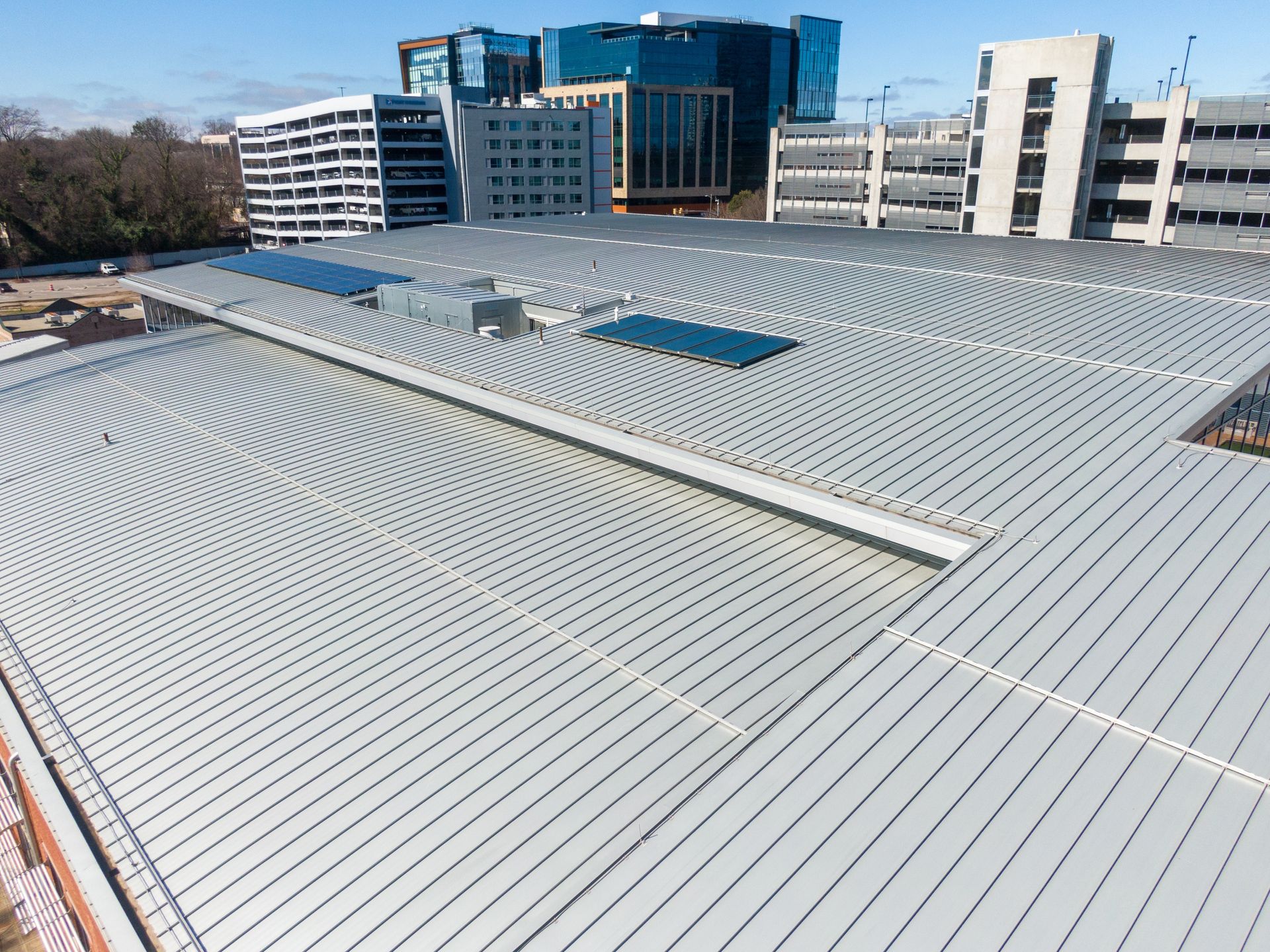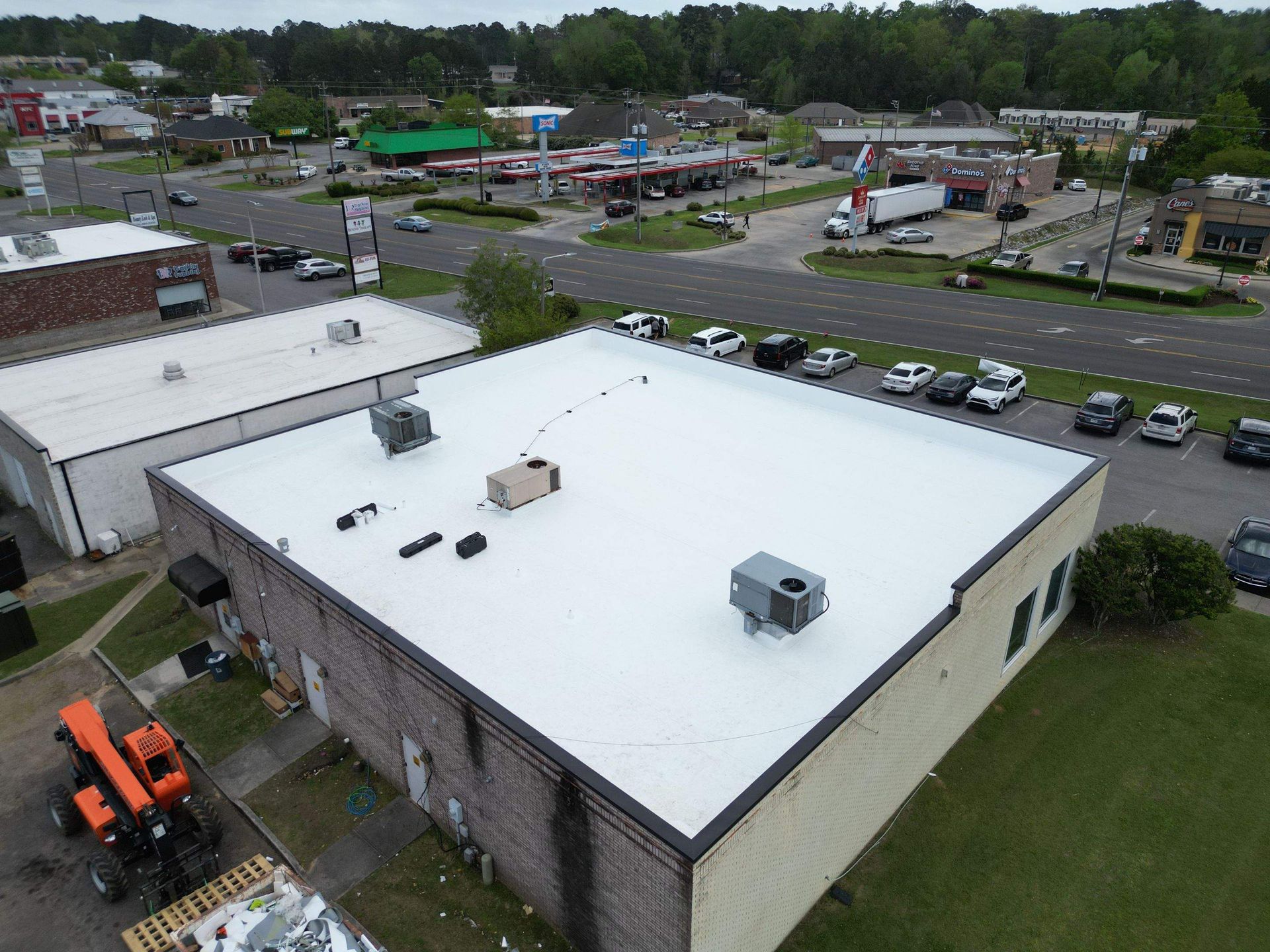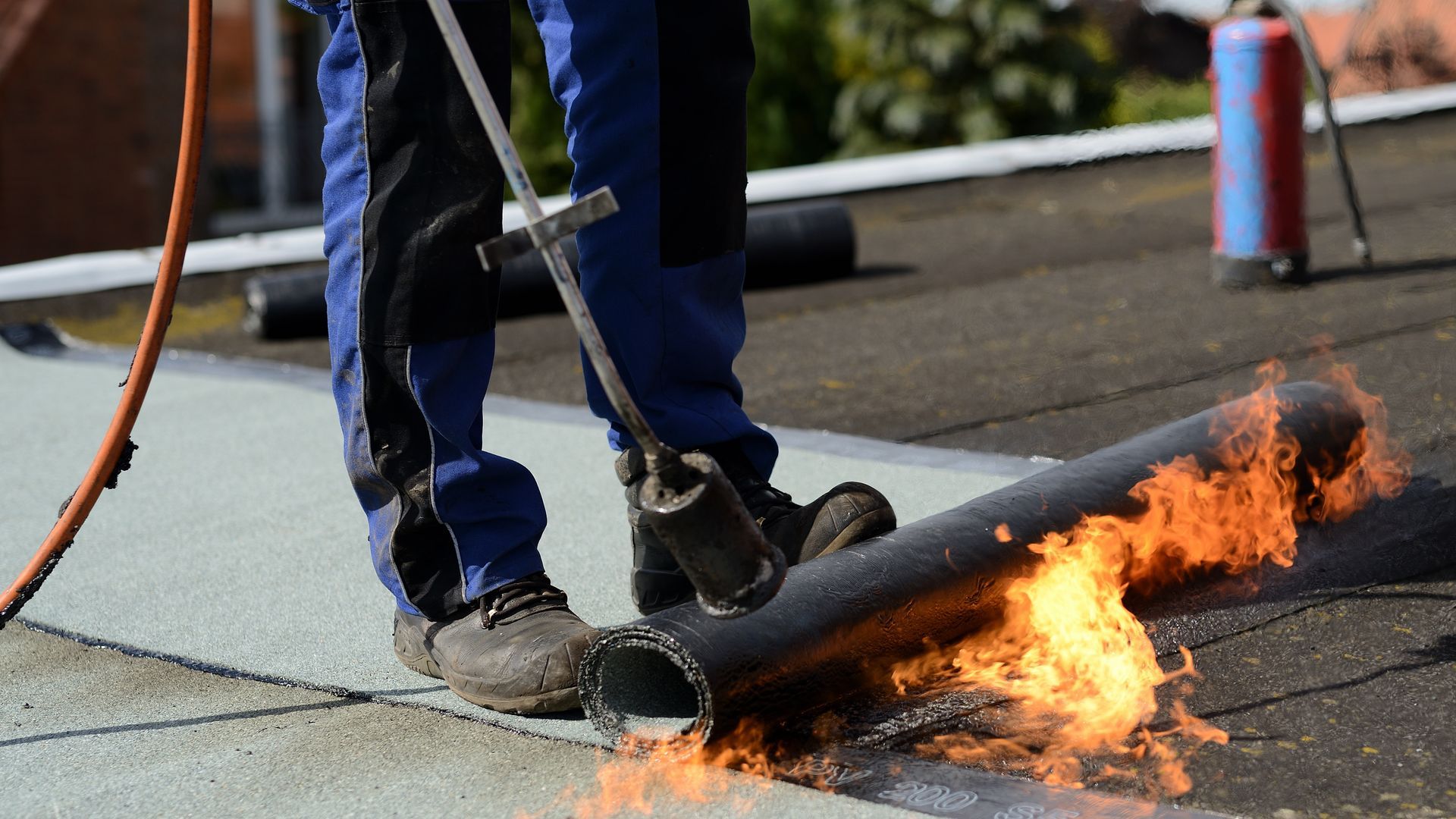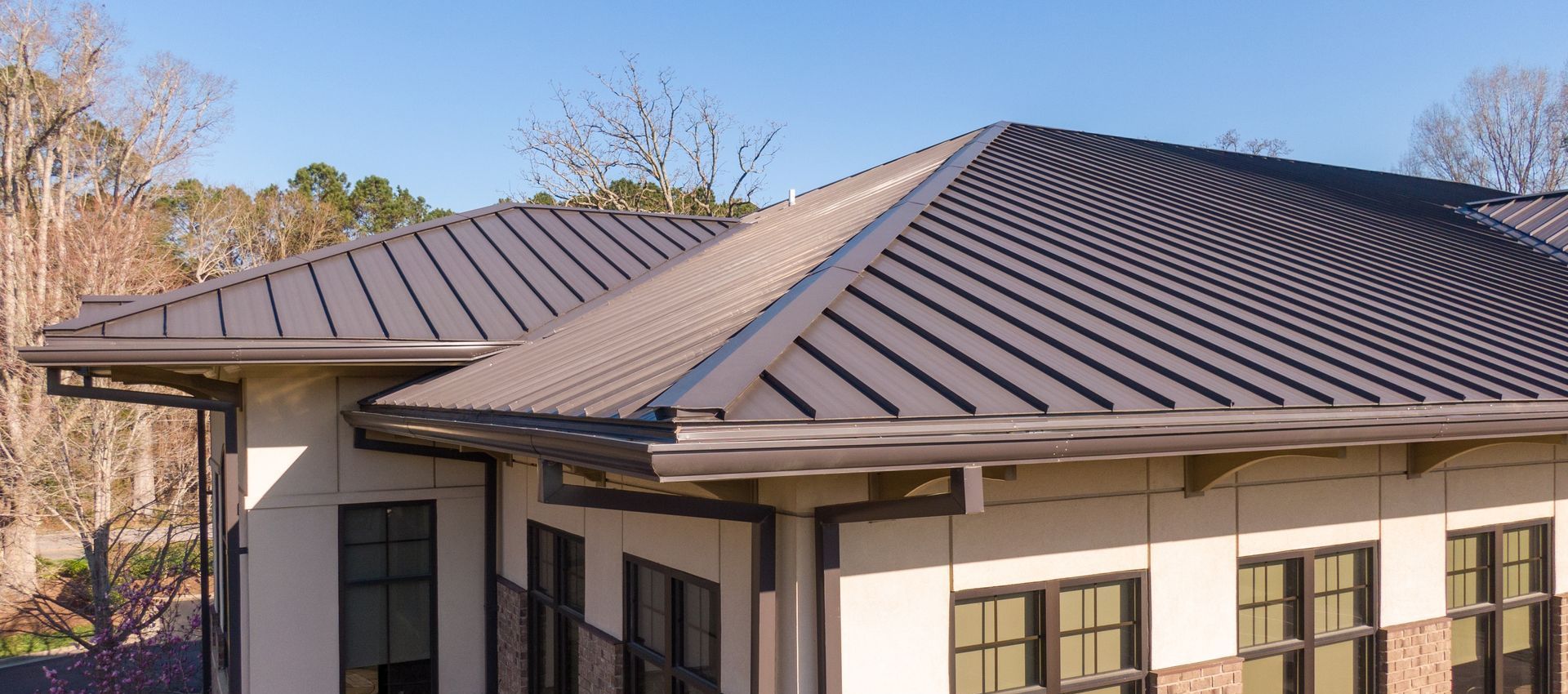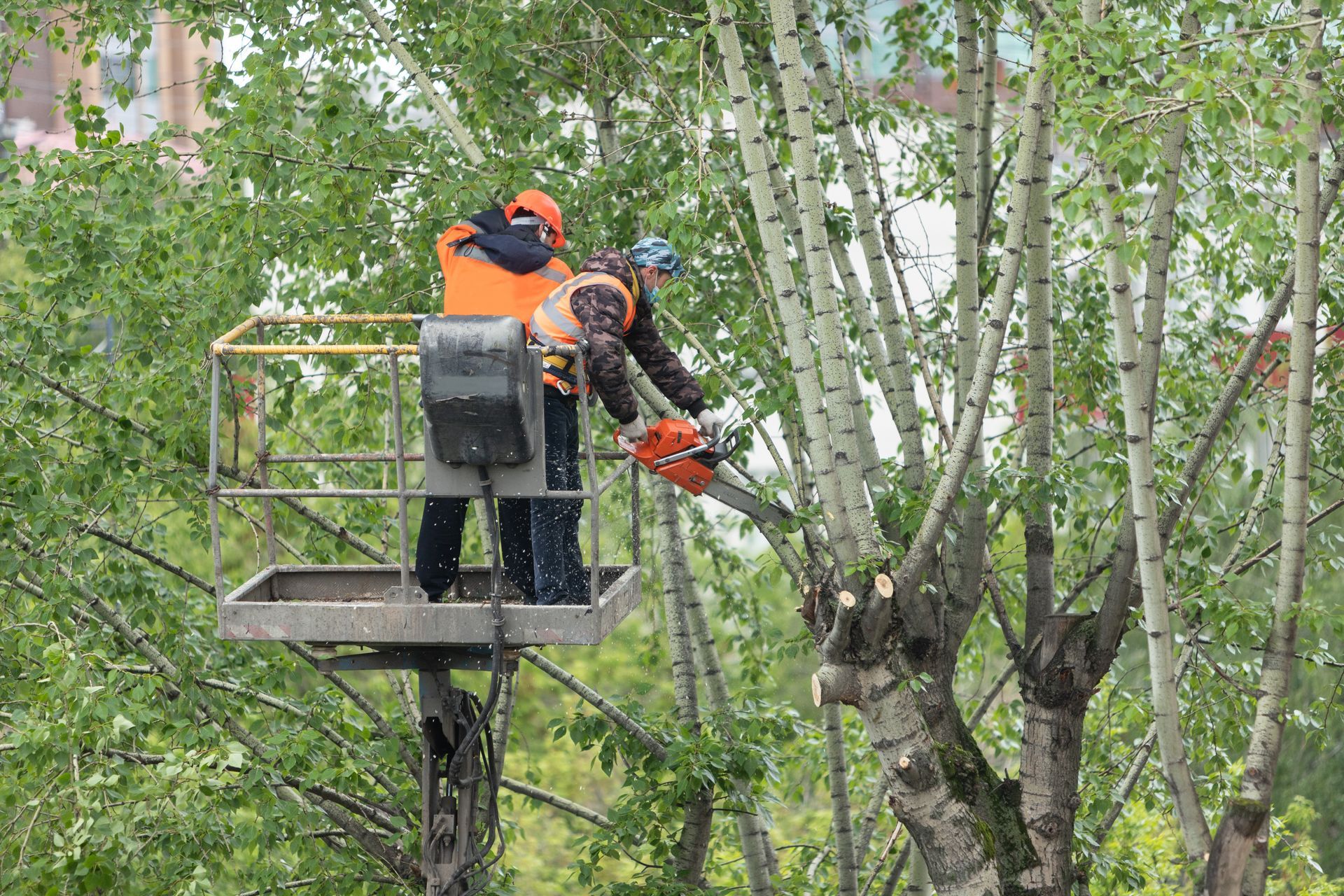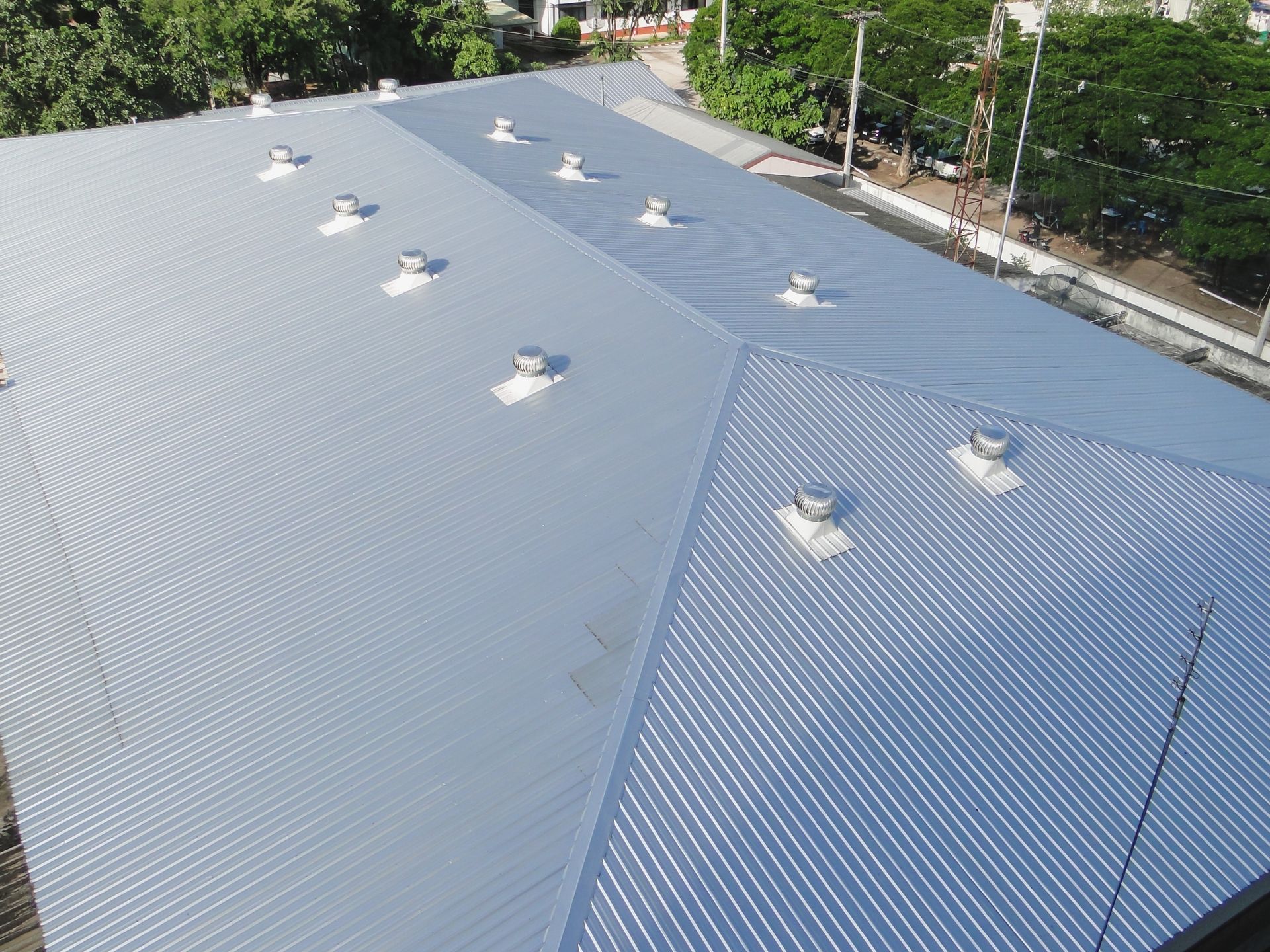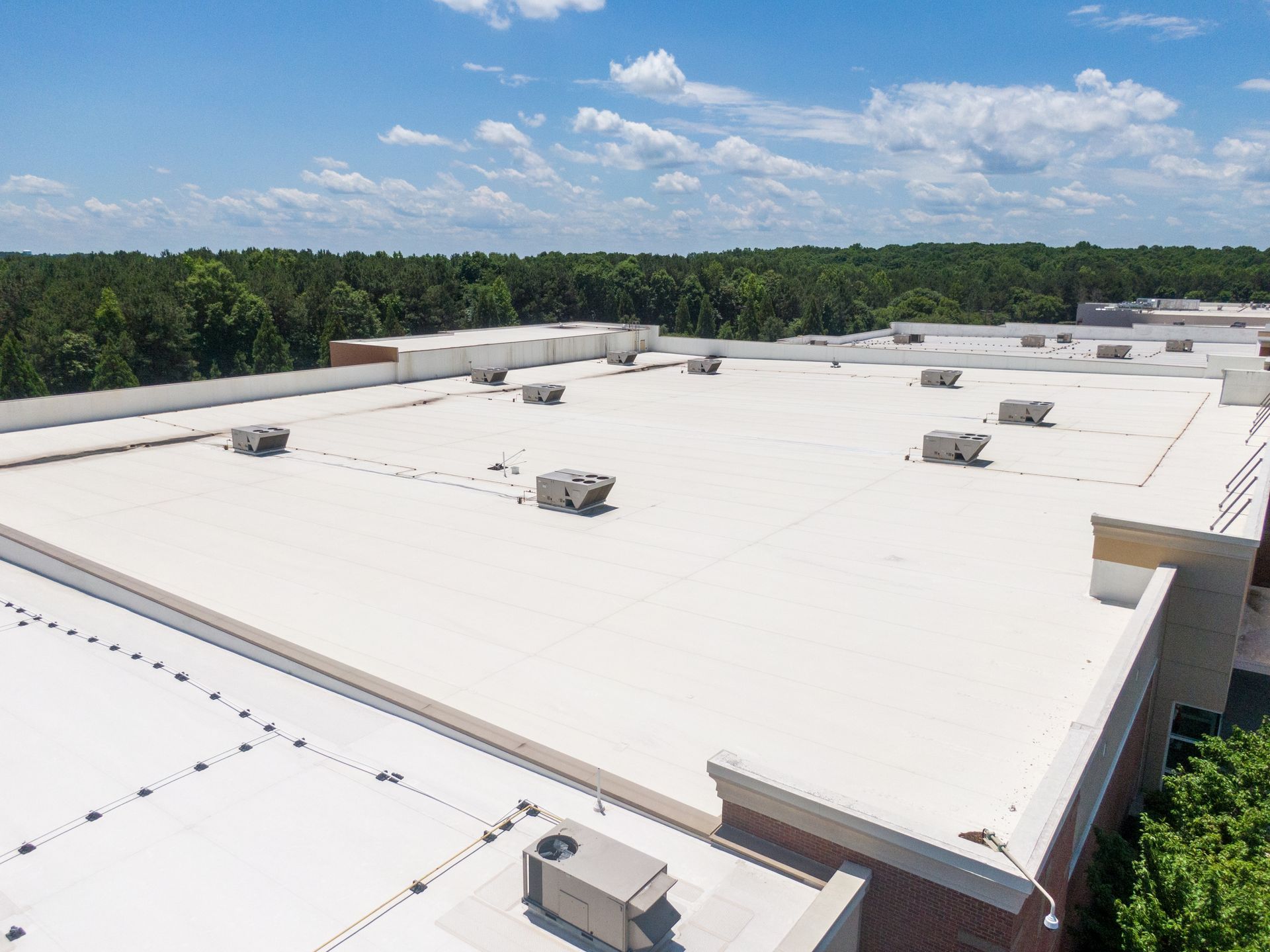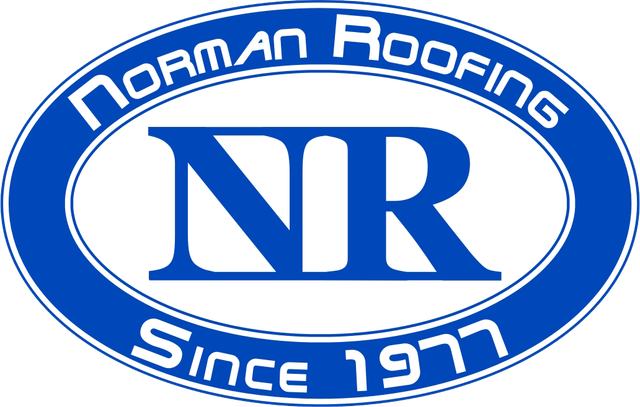How MS Businesses Can Prevent Common TPO Roof Problems
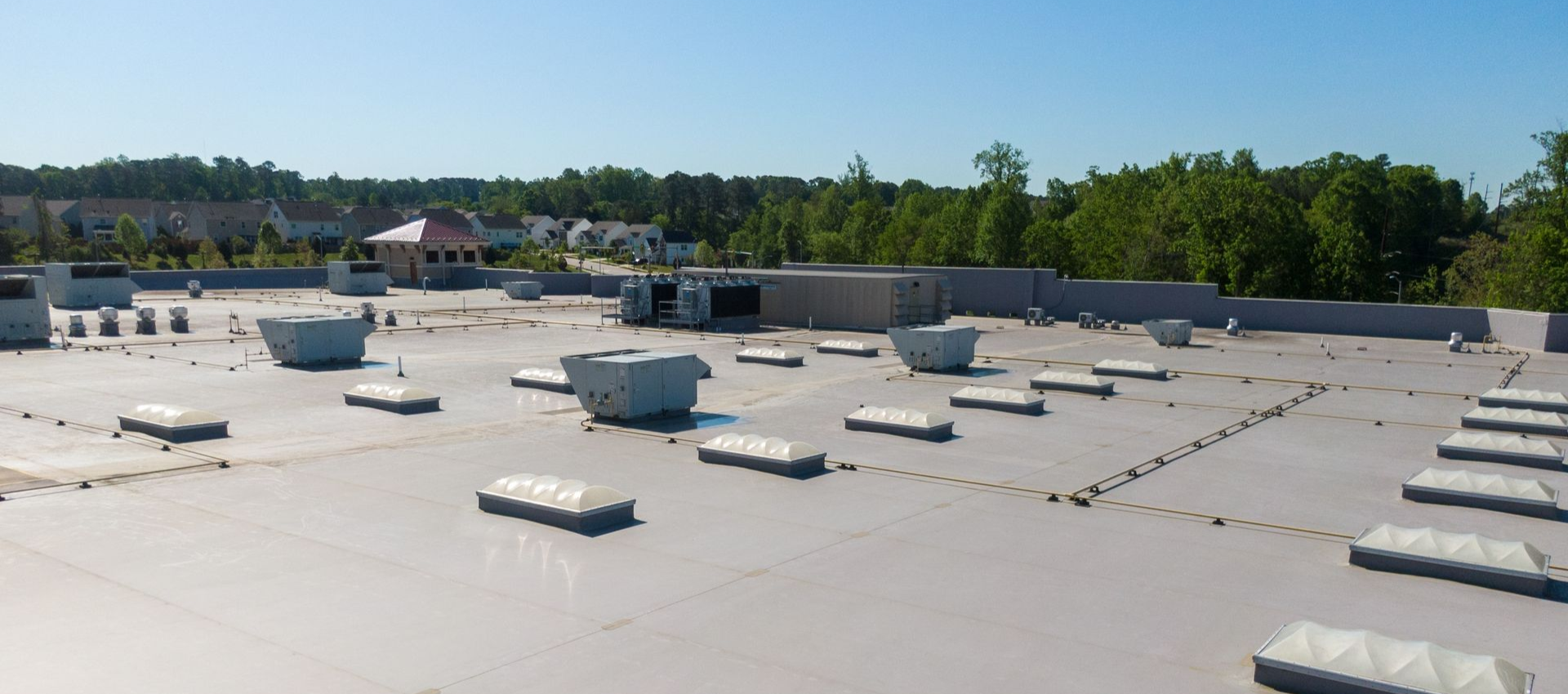
Mississippi’s hot, humid climate and frequent storms can take a serious toll on commercial roofing systems, particularly TPO roofs. By understanding the most common problems and taking proactive steps, businesses can protect their roofs, extend their lifespan and avoid unexpected repairs. Let’s take a closer look at some common TPO roof problems and what business owners can do to prevent damage to their systems.
Clean Your Roof Regularly
Regular cleanings are essential to keeping your TPO roof in top condition and extending its lifespan. Over time, debris like leaves, branches and dirt can accumulate on the surface, trapping moisture and leading to algae or moss growth. Gently washing the membrane with a soft-bristle brush and water can help remove buildup without compromising the material.
It’s important to avoid harsh chemicals or abrasive tools, as they can weaken the TPO system and cause unnecessary damage. For the best results, it's recommended that you get professional cleanings twice a year to ensure the roof is thoroughly cleaned.
Trim Your Trees
Another way that businesses can protect their TPO system is by trimming the surrounding trees. In Mississippi, vegetation can grow tremendously, producing lots of debris that can accumulate on the roof. Overhanging branches can scrape or puncture the membrane during storms or high winds, while fallen leaves and twigs trap moisture and encourage algae or moss growth. By keeping nearby trees properly maintained, you can reduce these risks and help ensure your TPO roof remains durable and long-lasting.
Keep Your Gutters and Downspouts Clean
Ensuring your gutters and downspouts are frequently cleaned plays an important role in protecting your TPO roof from damage. Clogged gutters can cause water to back up onto the roof, leading to pooling and increased stress on the membrane. Over time, this trapped water can seep into seams or vulnerable areas, increasing the risk of leaks and structural damage.
Regularly removing leaves, debris and other blockages allows water to quickly drain from your roof, which helps prevent water damage and extend the lifespan of your system.
Reseal Vulnerable Areas
Resealing vulnerable areas is a crucial step in protecting your TPO roof and preventing costly damage. Over time, the caulking around pipes, vents and drains can degrade, leaving gaps where water can seep in. Even small amounts of water can accumulate and cause extensive damage to the roofing system if left unchecked. By regularly inspecting these critical points and resealing them as needed, property owners can maintain their roof’s integrity, extend its lifespan and avoid expensive repairs down the line.
Prepare Ahead of Severe Weather
To help protect your roof from severe weather, businesses should plan ahead. Prior to a storm’s arrival, it's important to secure rooftop equipment like HVAC units and vents. This prevents them from shifting or becoming dislodged during high winds, which could puncture or tear the membrane.
Businesses should also reinforce any weak spots to ensure that their roof doesn’t detach during intense storms. Some common weak spots include loose seams, edges or flashing, which are especially vulnerable to uplift. By taking proactive steps before a storm, property owners can significantly reduce the risk of costly repairs and extend the life of their TPO roof.
Schedule Routine Inspections and Maintenance
Routine maintenance and inspections are essential for keeping your TPO roof in excellent condition. Regular upkeep ensures that your roof is working properly and underlying issues are addressed before they escalate into major repairs. By staying proactive, businesses can extend the lifespan of their TPO roof and get the most value out of their investment. Some issues that can be addressed during routine inspections include:
- Small punctures – Can allow water to seep into the roofing system.
- Seam gaps – Compromise the roof’s watertight barrier
- Cracks – May worsen over time due to temperature fluctuations
- Blisters – Can indicate trapped moisture or air
- Pooling water – Accelerates membrane wear and promotes algae growth
Looking for Reliable Roofing Services? Contact Norman Roofing Today!
Looking for experienced roofers to maintain the TPO roofing system? Norman Roofing has you covered. Based in Meridian, we’ve proudly served communities across Mississippi and Alabama for 48 years.
Our team specializes in commercial roof installations, routine maintenance and emergency roofing services to keep your system performing at its best. If you’re ready to work with roofing professionals who prioritize quality and durability, call us today at 601-483-4079. To explore all of our roofing options, visit our website by clicking the link here.

